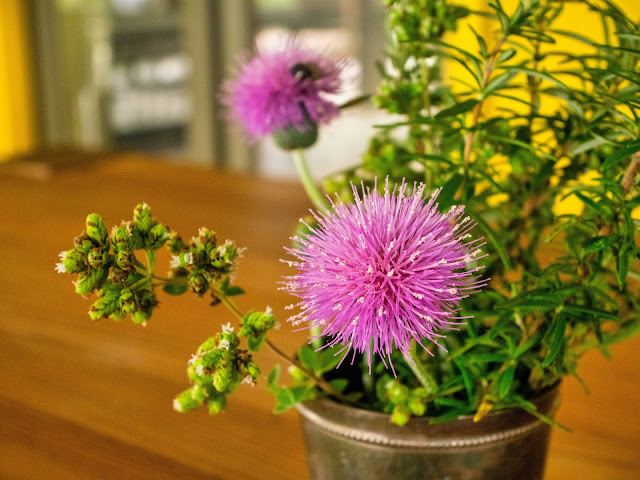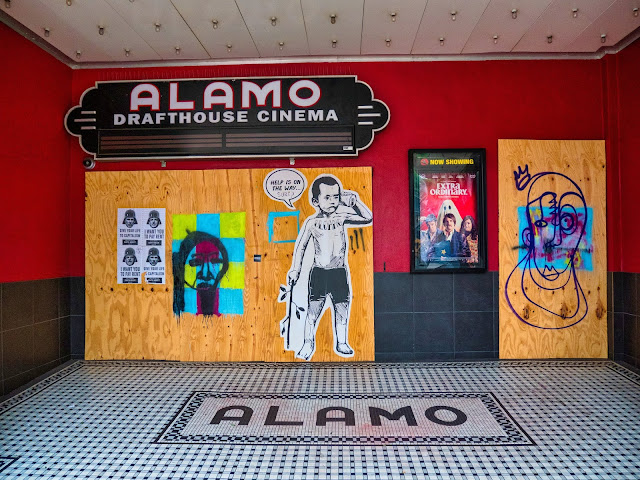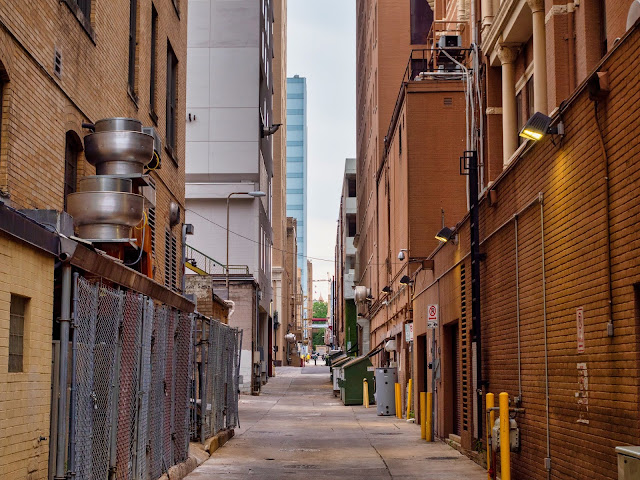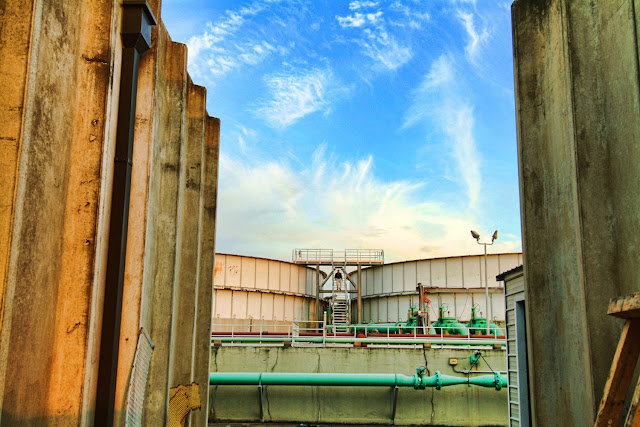Enchanted Rock. Outward Bound for Grown-ups.
5.31.2020
Nothing fun to write about in photography right now. I think I'll just concentrate on swimming and eating instead. OT/OT/OT !!!
The Western Hills Athletic Club Pool at Six a.m.
I shot this image before sunrise a couple of weeks ago. The pandemic had cut off swimming for our masters group entirely for about two months. When we finally got the chance to resume our heart-pounding and highly disciplined workouts the big problem was and continues to be the need for social distancing. When the club published a sign up for workouts I noticed that very few people were signing up for the 6am to 7am swim slots so I decided I'd take advantage of that time frame, three days a week, to get back in shape without having to struggle with finding the right balance of lane partners. I didn't want to discover that I'd forfeited all of my swim fitness and get lapped by younger, faster swimmers but I also didn't want to spend time in a lane with people much slower than me.
For the first two weeks of six a.m. workouts attendance was low enough that I could have a lane all to myself. I worried I might not be disciplined without other people in the lane to push me but I soon learned that a good coach, a hard set, a set time interval and a pace clock provide their own disciplines.
We're three weeks back in the pool now and I'm just starting to feel like I'm making up for the lost time.
The first day back I noticed how beautiful the pool looked with just the underwater lights to illuminate it. I thought of bringing a camera into the pool area with me but I was trying to streamline my time on the deck. I wondered if my iPhone could take an image that would make me happy. I brought it to the next day's workout and shot photographs (including the one above) just before I hopped into the water and started swimming. I also took a shot of the the pool an hour later, when the sunrise was in progress.
It can be daunting on some days to get up at 5:30 a.m. and rush to the pool. On cool mornings you know the water will also be colder and you hesitate to plunge in. But after the first few days you realize that your one hour slot is inflexible. With the new social distancing rules we need to leave a five minute time gap between our exiting of the pool and the next group's entry into the pool. That means every minute of that first 55 minutes of pool time is more valuable than it used to be.
I find that I like editing photos I've taken on the phone in the phone's internal software. It's easy to get good tweaks into the files and it's actually cool to take a photo and then edit it with the actual subject right in front of you for reference. You match color by immediate comparison which is a strength of human perception. I feel like I'm getting pretty good at it. And sometimes, at least at Instagram size, the files from the phone look as good or better than stuff from my much bigger and more expensive cameras.
It's enlightening to see how much more time there seems to be in a day on those three days I get up earlier. By 7:15 am I'm already home making coffee and eating breakfast. By 9 a.m. we're on task and ready; life has already been fired up and stuff has gotten done. The days seem much more productive. By 10:30 pm I'm ready to sleep through the night.
There is a reason I swim or run or exercise everyday. I have a fear of getting fat as I age. Of losing mobility. Of having to buy bigger, uglier clothes. Many of the people around me appear to keep putting on weight over the years and along with the weight seems to come health problems galore. It seems that the best predictor of aging in a healthy way is to stay very active and get lots of good, hard, exercise. Hours, not minutes, every day.
Many people would love to believe that changing their diet alone will be their fountain of youth but studies bear out that exercise is far more important a component in weight maintenance than exactly what you put in your mouth.
I have a friend who created a vegan diet. It's so strict. It even eliminates nuts and pretty much anything with oils. On this diet you can only eat plants and you can't even cook with oils. I tried it, and sure, you can lose weight if you can stick to eating that way but the diet alone does absolutely nothing for your physical fitness. I define overall fitness as having good endurance, a low resting heart rate, perfect blood pressure and the ability to do hard, physical work = running, swimming, rowing, biking or vigorous, hill intensive walking. You also need good muscle tone and good flexibility. None of which any diet will provide. Your diet may help you cut out cholesterol and that might improve your cardiovascular system but... the science in that regard is still a moving target.
People who desperately want to believe in diet as a cure all point to my friend (the one who writes extensively about his vegan diet) and point out that he is in exemplary physical condition. He should be! He works out in the pool for at least an hour a day, and at a world class level. He bikes everywhere. He runs a lot. But there's even more to it than that. Some of it is genetics; his dad was an Olympic athlete. His parents are in great shape. He has a job he absolutely loves and believes in.
But here's what the diet addicted don't want to hear: my friend was a world class triathlete for at least a decade (think: Iron Man/Kona) and before that he was an NCAA championship swimmer. But those were both true long before he began his journey into the diet world. The secret of his fitness is something I think he would readily admit: He stays in great shape (mentally and physically) largely because he has never slowed down his exercise schedule or lost hthe discipline required to step up his performance.
I'm certainly not suggesting that we can all go out and eat pizzas, burgers and french fries at every meal and stay healthy. Eating a sustainable and fun diet along the lines of the Mediterranean Diet, with lots of fish, vegetables, fruits and the like is a great start. Paired with vigorous exercise it's the basis for a healthy lifestyle. But the diet is only a partner with exercise; neither is a stand alone component of a healthy life. You really can't make one work for you without the other.
Swim, run, lift, bike, yoga, and eat well. Everything else is just a silly mess. And no, golf is not exercise. Neither is bowling. Those are games. Fun to play but meaningless when it comes to fitness.
See you on the trail or see you in the pool. But probably not at that joint that serves BBQ wings...
The best time to start getting healthier was twenty years ago. The second best time is today.
5.30.2020
Another mini-review of a now "ancient" digital camera: the Panasonic GX8.
A liberal's BBQ placemat.
The GX8 almost fell through the cracks. I bought it just after I started my process of really coming to grips with the Sigma fp camera and that seemed to overshadow any immediate interest I might had in the used and inexpensive Panasonic. But more and more lately, even after the recent re-purchase of a better spec'd G9, I reach for the GX8 when I'm heading out the door without a specific photographic intention. I wondered why that was.
If you want to know more about the nuts and bolts and specifications of the GX8 just head over to Digital Photography Review and read their review from three years ago. They liked it except for some stuff that's more or less been fixed in firmware. One big issue was what is called "shutter shock" in which vibrations from the mechanical shutter in this camera caused a degraded sharpness in files shot at certain (much used) shutter speeds. Panasonic incorporated an electronic shutter setting which eliminates the issue and also a EFC (electronic first curtain) shutter that also seems to deal with the problem.
What you are getting in the GX8 is a m4:3 camera with a good, 20 megapixel sensor, a rangefinder body design - with the evf over to the left side as you use the camera, and a big enough camera to hold onto without having to do some wacky compromise handhold. Add to that the fact that the finder can be rotated up by 90 degrees and you basically have a good idea of the whole package.
When it was introduced the whole delusional mania of the moment was that this particular model was too big. That, of course, was nonsense for normal, rational people. In fact, the camera is well proportioned and perfectly sized for people who actually go out and use cameras. It's much smaller and lighter than the G9, or the GH series cameras, and positively tiny and weightless when compared to the full frame, Panasonic S1 series cameras.
The camera features dual I.S. which uses the body I.S. and the lens I.S. together to leverage better stabilization performance than either could provide separately. It's not in the same league as the G9 with a dual I.S. enabled lens but it's very usable and, along with the electronic shutter setting it's quite enough for most applications.
I bought this camera, used, in 2020 but it was first released in 2015. It's currently holding its value well on the used markets. A cursory check today shows that it still commands a price of about $500 to $600 used and in excellent condition. About half its new price which is actually quite good for any digital product.
I bring this camera along with me when I'm not on some self-styled mission to get a particular kind of photograph because in a addition to being small and light it also has good high ISO performance, uses the same battery as my Sigma fp, and it very unobtrusive.
There are a few downsides that weren't deal killers in 2015 but might give one pause in 2020 if this is intended to be your sole camera and if you are ready to do some work in video. There is no built in flash, the buffer clearing can be a bit slow, and the camera has a single card slot (which is adjacent to the battery at the bottom of the camera body). In video there is no mechanical I.S. in 4K capture, there are no high data rate settings in 1080p and, for some insane reason, the microphone jack is an odd 2.5mm size which will require an adapter in order to use it with any consumer microphone or audio interface. There is also no headphone jack. I'm not interested in using the GX8 for video but I can see pressing it into use in a pinch because of the rotating rear screen (V-logger friendly) and the very decent 4K output. But I have cameras that are much, much better equipped and optimized for high quality video capture.
But I would say that this camera was clearly intended to be a pleasant and competent photography camera and that video was a familial afterthought on the part of Panasonic.
Since the camera uses Panasonic's previous (to the G9 and S1 series) Jpeg motor those files from the camera aren't quite as good as Jpegs from more recent Panasonic cameras. The G9 is generates some of the nicest files I've worked with of all the cameras I routinely shoot with. But! If you shoot raw so much of the heavy lifting (in terms of color science and file glorification) are done in post so if you are using the latest version of the Adobe products or even Luminar 4.1+ you'll get a lot of control with color and tonality from the GX8 files. It's a classic case of improvements in raw processors lifting all boats. Even those launched five years ago.
My take on the GX8? I was able to purchase my very clean model for around $350 a month or so ago and I keep my eyes on the market to see if I can acquire one more in the same price range. They are well made, weatherproof, fun to use and even more fun to carry around. All the dials and buttons seem to be perfectly placed and the menus are easy to learn. If I was shooting with these as my primary cameras I'd be reticent to upgrade. Seems like color performance (Jpeg) in newer cameras gets tweaked but not much has really advanced, sensor-wise, and some of the models following the GX8 have compromises (lesser EVFs, smaller, fiddly-er interfaces) that don't really make them "better" for my kinds of shooting.
And now, a quick and odd assessment of an overlooked lens: I've shot all of the attached photographs with one lens. It's a tiny, collapsible 12-32mm f3.5 to f5.6. I thought of it as a throw-away toy when I got it last year, bundled with a GX85 kit. On a lark, last week I put it on the GX8 and started shooting. I liked the focal length range and it gave me a finder image that was sharp and snappy. I saved judgement until I could view the results in PhotoShop on a 27 inch, 5K screen. While the lens has some obvious barrel distortion when used around 12mms I don't really find it objectionable, and with a little elbow grease in my Adobe products I can correct it, for the most part.
So, the lens is sharp, contrasty, yields detailed files and also provides the second dose of image stabilization when used in conjunction with the body stabilization. Counterintuitively I am really enjoying using this lens on the GX8 as my take anywhere lens. I also have the 12-60mm f2.8-4.0 Leica lens but I haven't felt compelled to put it on the GX8. Maybe that's because the little 12/32 is doing such a sweet job and it so small and light...
The rest of the review is totally visual. It's in all the images included with this post. Just scroll through, pop open in a bigger window. Click to enlarge and have a good look. I can't tell (except for the geometric distortion) that they weren't done with an expensive lens but maybe you have more refined visual perception than me. As essentially a free addition to a kit I'm certain the lens is a valuable keeper.
In conjunction with the GX8? A winning, relatively modern point-and-shoot configuration with all the needed bells and whistles for a street shooter or avid artist. Maybe not a sports camera... Most of these images were done in Program mode using Auto ISO. I tweaked where I felt necessary with the fabulous compensation dial that is concentric with the GX8's mode dial. Easy and fun.
In Texas, it isn't BBQ without some white bread to go with it.
From the Salt Lick BBQ.
Wine for BBQ.
My chef/friend Emmett Fox. Curator of the BBQ dinner last Saturday.
Emmett at home in Dripping Springs, Texas.
The country roads around Dripping Springs are perfect for those
Socially Distanced walks. The GX8 and 12/32 are perfect for same.
Surprised by just how good the files shot at 1250 and 1600 ISO look.
One message one week, an opposite message on another week...
Concave exhibitionist mirror.
This image really shows of the lens distortion.
I think it looks sweet.
5.29.2020
Austin, Texas Street Photographer. Circa 2020.
In mid-2020 the authentic street photographer is seen with his trusty
Panasonic GX8, the natty 12-32mm kit lens (which has awesome distortion!!!)
and his face mask. The bandana, worn loosely around the neck, serves as a
"back-up" face mask should the need arise.
Note to self: purchase less baggy clothing.
What a perfect morning! It's amazing what there is to see before the sun rises...
Exuberance.
5:30 a.m. is an interesting time to be awake. Everything is still and quiet. And dark. I try to get out of bed gently so I don't wake up Belinda. I walk down the long, dim hallway to the bathroom I've taken over as my own and I find my swim suit, goggles and a dry towel. We come to the swimming pool in our swim suits now since the locker rooms are closed.
Once I've got the important stuff in hand I pad out to the kitchen and make a quick coffee with lots of milk in it. I browse through e-mail while I drink my coffee and, sometimes, eat a handful of the amazing granola that my friend, Emmett, makes while he's taking time off from his restaurant.
It's so delicious I want to eat it all but I resist because I know Belinda likes it too.
After I finish with coffee I brush my teeth. I like Tom's natural toothpaste in the peppermint flavor. No one wants to swim next to a person with coffee breath.
I'm always extra careful backing out of the driveway because we have baby fawns nearby and then there's the occasional grey fox and, of course, the early joggers and walkers. The back-up camera in my car is one of the miracles of modern life...
The trip to the pool takes about a minute and 45 seconds at 5:50 a.m. There's no traffic and the lights are still set to blinking red. I turn into the pool and I'm on familiar turf as I've swum here most days for the last 25 years. You'd think I'd be a better swimmer by now but there's always one more thing to learn.
Today's coach, Will, was already on the deck and ready for us. He's an amazing coach and a part owner of a craft distillery that makes whiskey. At 25 he seems to have his path figured out well. He starts us out with a 400 yard swim. The workout progresses through different sets and the person in the next lane over from me remarks about the beautiful first blush of the sunrise. I swim the set of 200s doing backstroke instead of freestyle so I can see the magenta clouds flow across the deep, rich, blue sky.
I am at peace in a way that's hard to explain. To be an age that is considered by some to be "old" but to have total confidence in my body's abilities to swim, run and exist without pain or fatigue is a priceless gift. To swim a stroke for which you have a degree of speed and mastery while watching the sky shift from subtle to beautiful to regal is an amazing mix. For the better part of the workout my mind seemed to exist perfectly in the present. As I brought each arm down to complete the backstroke I could feel the pressure of the cool water resist and flow.
When we ended our workout I felt so truly alive that I had to just stand still for a few moments to smell the morning and to enjoy the painted sky. I wish I had brought my camera to the pool deck. I'm glad I didn't bring my camera to the pool deck. There is something about the directness of some experiences that makes all accessories to the moment seem shallow and dilute.
I got home, made tea, ate pancakes and then put on my favorite walking shoes. Belinda and I headed out the door around 7:45 for our walk over the hills and through our neighborhood. The sun was shining but there was a cool breeze and the temperature was just right. Cool enough to keep sweat at bay but warm enough to preclude the need for a jacket or sweater. We talked about how lucky we have been and how we have so much to be thankful for. Neither of us looks backward. We're always ready to see what the future holds and to see what our place in it will be.
At the moment it seems like a life without fear; without want. Now I'm off to make some equipment donations. Later I'll pick up a camera and head downtown. My friend, Andy, wrote about a new art installation at Republic Park. His photos were intriguing. I want to see for myself.
I wonder if we'll have an equally beautiful sunset tonight...
Tranquility.
companionship.
Hope.
Sparkle.
History.
Landscape. Roots.
The sunset looks good even over the waste facility.
always ready to swim. Anywhere.
Change.
My wish for everyone.
Subscribe to:
Posts (Atom)





























































